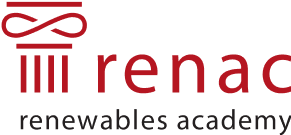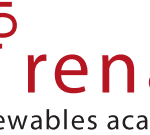This website uses cookies so that we can provide you with the best user experience possible. Cookie information is stored in your browser and performs functions such as recognising you when you return to our website and helping our team to understand which sections of the website you find most interesting and useful.
Customer-specific programmes
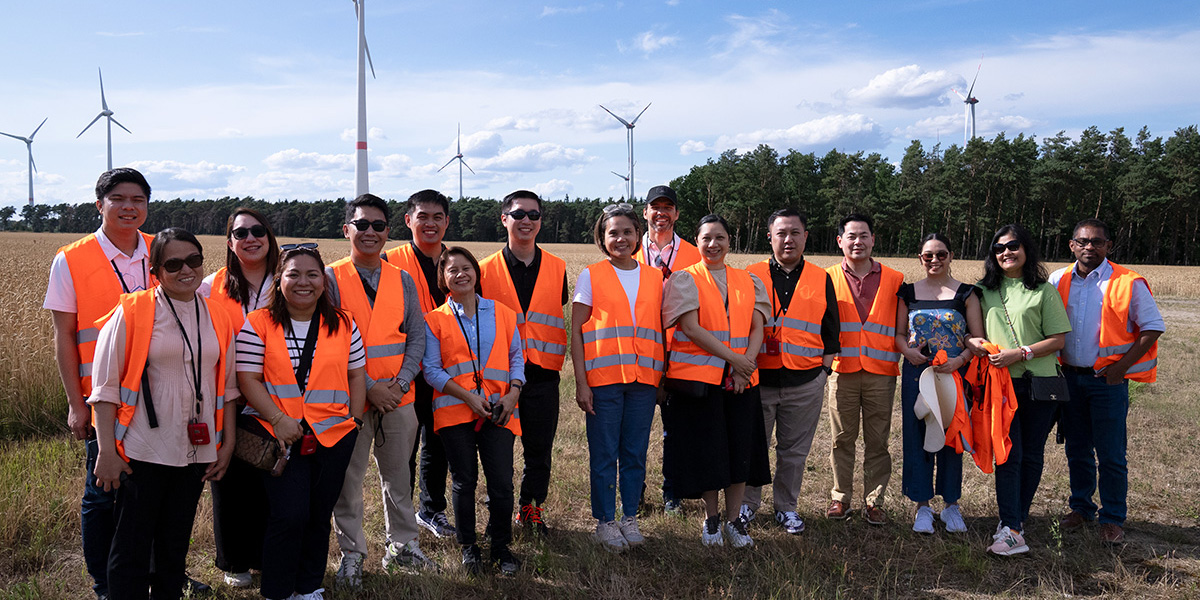
Job requirements in the green energy markets are complex and manifold. To ensure a company or organisation success, employees need extensive skills and up-to-date know-how.
RENAC customer-specific programmes offer the best way to meet participants’ training objectives:
- Analysis of participants’ capacity needs
- Selection of training contents and methods according to prior knowledge and needs
- The most suitable trainers
- Development of comprehensive materials with the highest quality standards
- Implementation of the training
Additionally, the training can be adjusted in duration and depth, organised for groups of various sizes and adapted to cover various technologies. Clients can determine when and where the training takes places.
Filter and search
Type
Name
Duration
Study time
Info
- commissioning, components, configurations, frequent faults, installation, system design
hours
Content:
- Potential of solar energy and physics of thermosiphon systems
- Collectors, system configurations, solar storage tanks, system components and where they are used
- Installation
- Stagnation and system design
- System commissioning and frequent faults and errors
- Solar thermal market and economics
- Best practice: Macaw Lodge, Costa Rica
Learning objectives:
After completion of this course, participants will be able to:
- Explain the physical principle of the thermosiphon effect
- Name thermosiphon systems components
- Compare different system configurations
- Identify different installation options
- Optimise system performance
- Avoid typical mistakes
- Describe the market situation
Target group:
This training suits those who are from the energy sector, engineers, installers, building services managers
- country case studies, overview / general aspects, Sub-Sahara Africa
hours
Content:
- Overview about energy use cases in Sub-Saharan Africa
Learning objectives:
After completion of this course, participants will be able to:
- Understand common energy needs of business owners and consumers in the region
Target group:
This training suits professionals who
- Intend to introduce and enhance the financing of green energy systems in their financial institution (e.g. bank managers and staff);
- barriers, bundling of policies, economic incentive, information policy, regulation policy
hours
Content:
• Necessity for energy efficiency policies
• Benefits of support mechanisms
• Types of energy efficiency policy measures: regulatory, informational, economic, voluntary
• Combining and assessment of different measures
Learning objectives:
After completion of this course, participants will be able to:
• Name different barriers to energy efficiency deployment
• Identify the roles and competencies of political stakeholders in energy efficiency
• Discuss the benefits and drawbacks of the most common support mechanisms
• Explain the bundling of different support mechanisms to achieve governmental goals
Target group:
This training suits those who:
• Are responsible for developing support mechanisms for energy efficiency projects
• Want to make use of support mechanisms in their energy efficiency project
• Evaluate, compare and assess support mechanisms for energy efficiency
- action plan, district heating, governance, heating/cooling, multi stakeholder participation, political instruments, power generation, roadmaps, transport
Content:
- Assessing the status quo
- Data collection
- Target setting
- Energy efficiency
- Renewable energy technologies for Heating, Cooling and Electricity
- Sector coupling
- Sustainable Transport
- Energy transition and grid integration
- Multi-level governance
- Political instruments
- Administrative process innovation
- Economics and Financing
Learning objectives:
After the seminar participants will be able to:
- Classify the importance of urban areas with regard to the goal of a decarbonisation
- Explain how an inventory of baseline emissions is developed
- List the data needed as a data basis for municipal energy planning in the categories energy demand, energy infrastructure and renewable energy potential
- Name the benefits of targets and demonstrate how they can be set
- Describe the different renewable energy technology options available
- Classify the contribution of energy efficiency to decarbonisation and name potential energy efficiency measures in municipalities
- Demonstrate possibilities to integrate the electricity, heat and transport sector to achieve a decarbonisation
- Give examples for measures to reduce emissions in the transport sector
- Assessing the impact of the expansion of fluctuating renewable energies and the phase out of conventional generation at the municipal level
- Define responsibilities among the national, regional and municipal level
- Identify political instruments which can be implemented to facilitate the transition to a low carbon energy supply
- Integrate energy planning into administrative processes
Target group:
This training suits:
- Municipal and regional government representatives
- Municipal and regional administration
- Consultants for regional and municipal governments
hours
Content:
- The impact of economic crises on renewable energy
- Green Recovery programmes and RE investment frameworks
- Financing means & fiscal measures
- Green Recovery Programmes and Employment Opportunities
- Green Recovery Programmes and RE Industrial Policies
- Green Recovery and Energy Access Policies
Learning objectives:
After completion of this course, participants will be able to:
- Describe the impact of economic crises on the energy sector
- Understand how economic crises intensify the urgency to expand renewable energy
- Explain why the transition to clean energy technologies can be an attractive part of economic recovery packages, with many social and economic benefits
- Give examples of key policy strategies that can be applied in green recovery packages
Target group:
This training suits those who:
- are interested in the beneficial side effects of renewable energy in climate change mitigation
- finance, sustainability
hours
Content:
- Sustainable finance concepts
- Market and policy framework
- Climate-related financial disclosures by organizations
- The future of sustainable finance
Learning objectives:
After completion of this course, participants will be able to:
- Summarise the concept of sustainable finance
- Contextualise the market and policy framework of sustainable finance
- Identify drivers and obstacles to sustainable finance
- Link climate-related risks to financial stability
- Describe climate policy and assess its effect on sustainable finance
- Explain the financial impact of climate-related issues at the organisational level
- Name ongoing regulatory initiatives to change the legal framework for sustainable finance
- Reflect critically on the challenges ahead and formulate actions to address them
Target group:
This training is addressed to:
- Renewable energy and climate project developers and investors
- Professionals working in financing institutions, consultancies, and public organisations
- capacity constraints, long-term view, power system flexibility, residual load, tools/software overview, unit commitment
Content:
- Introduction and typical questions of power system planning
- Modern long-term electric power system expansion planning considering co-benefits of grid connected wind power and solar-PV:
-
- Residual load approach for system planning
- Unit commitment and generator dispatch planning
- Capacity constraints (sufficient security of supply) planning
- Distribution and transmissions grid planning
- Sector coupling planning
- Resource optimization, reliability evaluation and production cost simulation
- Fixed / variable costs, CAPEX, OPEX and LCOE
- Flexible thermal generation planning – from base load to flexible middle and peak load power production
- Software tool overview used for power system planning taking into account co-benefits of renewable power generation (Purpose, features and covered co-benefits / environmental effects)
- Power system planning case studies considering co-benefits of wind and solar-PV
Learning objectives:
After the seminar participants will be able to:
- explain the differences between the traditional and modern power system planning approaches based on different load curve methods and incorporation of co-benefit grid connected wind power and solar-PV
- compare tools used for power system planning and how co-benefits can be used during the planning process and
- to explain how selected co-benefits of renewable energy e.g. information on “global warming and human health effects of ambient air quality” affect the outcome of power system planning
Target group:
This training suits:
- Ministries recognising the importance of climate protection/policy and/or with responsibility for climate and energy policy on national level
- Energy planning commissions and planning divisions of grid operators
- Authorities and regulators with power supply planning tasks
- Policy makers on subnational/state level
- Energy or climate related agencies, think tanks and research institutions
- advantages/disadvantages, framing link, high impact measures, indicators, leverage of joint, overview / general aspects
hours
Content:
• Framing the link between EE and RE
• Synergies from implementing EE and RE measures at the same time
• A methodology to measure synergies between EE and RE
• Examples of synergy between EE and RE
• Indicators to track synergy between EE and RE
• Interpretation of various graphs
• Decomposition analysis for EE
Learning objectives:
After completion of this course, participants will be able to:
- Recognise the relationship between energy efficiency (EE) and renewable energy (RE)
- Name technologies that promote synergy between EE and RE
- Describe the methodology to identify valuable measures for creating synergy
- Name indicators to trace the linkage between EE and RE
- Explain the meaning of different graphs showing concepts related to EE and RE
Target group:
This training suits those who:
- Would like to understand the relation between renewable energy and energy efficiency
- Need to develop and apply synergy-strategies in power system modelling and planning
- Want to communicate the advantages of a strategy that considers synergies between energy efficiency and renewable energy
- energy audits, energy efficiency networks, energy management systems, financing, qualification of energy auditors
hours
Content:
• Energy management
• Energy audits
Learning objectives:
After completion of this course, participants will be able to:
• Summarize the principles and scope of energy management systems
• Explain the principles and scope of energy audits
• Demonstrate the benefits that energy management systems and audits provide for companies to realise their energy saving potential
• Illustrate the barriers that exist towards energy management systems and audits
Target group:
This training suits those who:
• Need a comprehensive but concise overview on energy management systems and energy audits
• Will have to reliably evaluate how implementation of energy efficiency measures can be organized at their work
- compressed air, cooling processes, electric drives, industrial heating, lighting, pumping/ventilation systems
hours
Content:
• Heating
• Cooling
• Electric Drives
• Pumps
• Compressed Air
• Ventilation
• Lighting
• Sectoral approaches
Learning objectives:
After completion of this course, participants will be able to:
• Demonstrate the basic functions of cross-cutting technologies in industry
• Determine areas of application for cross-cutting technologies in industry
• Prepare technical measures to enhance energy efficiency with regard to the respective cross-cutting technology
• Classify the saving potential of the technical measures to enhance the energy efficiency
Target group:
This training suits those who:
• Are new to Energy Efficiency
• Need a comprehensive but concise overview on cross-cutting technologies used in industry
• Have to be aware of the technical an economic saving potential of cross-cutting technologies
- balancing costs, economic effects, grid costs, plant utilisation, total costs
hours
Content:
• Grid costs
• Balancing power costs
• Effects on existing power plant utilisation
• Total system cost approach
Learning objectives:
After completing this course, participants will be able to:
- explain the concept of integration cost, its purpose, definition and relevant points of discussion,
- describe different approaches to the quantification of grid costs, balancing costs and the economic effects on existing conventional power plant utilisation,
- specify the range of grid costs, balancing costs and economic effects on existing conventional power plant utilisation, and discuss possible reasons for variations in estimates and
- discus the total system cost approach as an alternative for comparing integration cost in different scenarios and identify its strengths and limitations.
Target group:
This course suits those who
- Would like to get detailed insight in the economics of grid integration of wind and PV
- Want to compare grid integration costs with benchmark data
- Need to develop grid integration strategies for photovoltaic and wind power
- commissioning, grid-connected systems, IEC62446, troubleshooting
Content:
• Seven main failures of PV systems
• Start-up check
• Start-up measurements using standard instruments
• Troubleshooting using special instruments
Learning objectives:
After the seminar participants will be able to…
• Describe the main failures of PV system installations
• Identify main failures in a visual inspection
• Explain measurements according to IEC62446
• Interpret measurement results using standard instruments
• Summarize the added value of using special instruments for troubleshooting (thermography, electroluminescence, dark IV-curves)
Target group:
• Engineers involved in planning, constructing, commissioning and servicing of PV systems, with focus on grid-connected rooftop systems.
Content:
- Potential of solar energy and physics of thermosiphon systems
- Collectors, system configurations, solar storage tanks, system components and where they are used
- Installation
- Stagnation and system design
- System commissioning and frequent faults and errors
- Solar thermal market and economics
- Best practice: Macaw Lodge, Costa Rica
Learning objectives:
After completion of this course, participants will be able to:
- Explain the physical principle of the thermosiphon effect
- Name thermosiphon systems components
- Compare different system configurations
- Identify different installation options
- Optimise system performance
- Avoid typical mistakes
- Describe the market situation
Target group:
This training suits those who are from the energy sector, engineers, installers, building services managers
Content:
- Overview about energy use cases in Sub-Saharan Africa
Learning objectives:
After completion of this course, participants will be able to:
- Understand common energy needs of business owners and consumers in the region
Target group:
This training suits professionals who
- Intend to introduce and enhance the financing of green energy systems in their financial institution (e.g. bank managers and staff);
Content:
• Necessity for energy efficiency policies
• Benefits of support mechanisms
• Types of energy efficiency policy measures: regulatory, informational, economic, voluntary
• Combining and assessment of different measures
Learning objectives:
After completion of this course, participants will be able to:
• Name different barriers to energy efficiency deployment
• Identify the roles and competencies of political stakeholders in energy efficiency
• Discuss the benefits and drawbacks of the most common support mechanisms
• Explain the bundling of different support mechanisms to achieve governmental goals
Target group:
This training suits those who:
• Are responsible for developing support mechanisms for energy efficiency projects
• Want to make use of support mechanisms in their energy efficiency project
• Evaluate, compare and assess support mechanisms for energy efficiency
Content:
- Assessing the status quo
- Data collection
- Target setting
- Energy efficiency
- Renewable energy technologies for Heating, Cooling and Electricity
- Sector coupling
- Sustainable Transport
- Energy transition and grid integration
- Multi-level governance
- Political instruments
- Administrative process innovation
- Economics and Financing
Learning objectives:
After the seminar participants will be able to:
- Classify the importance of urban areas with regard to the goal of a decarbonisation
- Explain how an inventory of baseline emissions is developed
- List the data needed as a data basis for municipal energy planning in the categories energy demand, energy infrastructure and renewable energy potential
- Name the benefits of targets and demonstrate how they can be set
- Describe the different renewable energy technology options available
- Classify the contribution of energy efficiency to decarbonisation and name potential energy efficiency measures in municipalities
- Demonstrate possibilities to integrate the electricity, heat and transport sector to achieve a decarbonisation
- Give examples for measures to reduce emissions in the transport sector
- Assessing the impact of the expansion of fluctuating renewable energies and the phase out of conventional generation at the municipal level
- Define responsibilities among the national, regional and municipal level
- Identify political instruments which can be implemented to facilitate the transition to a low carbon energy supply
- Integrate energy planning into administrative processes
Target group:
This training suits:
- Municipal and regional government representatives
- Municipal and regional administration
- Consultants for regional and municipal governments
Content:
- The impact of economic crises on renewable energy
- Green Recovery programmes and RE investment frameworks
- Financing means & fiscal measures
- Green Recovery Programmes and Employment Opportunities
- Green Recovery Programmes and RE Industrial Policies
- Green Recovery and Energy Access Policies
Learning objectives:
After completion of this course, participants will be able to:
- Describe the impact of economic crises on the energy sector
- Understand how economic crises intensify the urgency to expand renewable energy
- Explain why the transition to clean energy technologies can be an attractive part of economic recovery packages, with many social and economic benefits
- Give examples of key policy strategies that can be applied in green recovery packages
Target group:
This training suits those who:
- are interested in the beneficial side effects of renewable energy in climate change mitigation
Content:
- Sustainable finance concepts
- Market and policy framework
- Climate-related financial disclosures by organizations
- The future of sustainable finance
Learning objectives:
After completion of this course, participants will be able to:
- Summarise the concept of sustainable finance
- Contextualise the market and policy framework of sustainable finance
- Identify drivers and obstacles to sustainable finance
- Link climate-related risks to financial stability
- Describe climate policy and assess its effect on sustainable finance
- Explain the financial impact of climate-related issues at the organisational level
- Name ongoing regulatory initiatives to change the legal framework for sustainable finance
- Reflect critically on the challenges ahead and formulate actions to address them
Target group:
This training is addressed to:
- Renewable energy and climate project developers and investors
- Professionals working in financing institutions, consultancies, and public organisations
Content:
- Introduction and typical questions of power system planning
- Modern long-term electric power system expansion planning considering co-benefits of grid connected wind power and solar-PV:
-
- Residual load approach for system planning
- Unit commitment and generator dispatch planning
- Capacity constraints (sufficient security of supply) planning
- Distribution and transmissions grid planning
- Sector coupling planning
- Resource optimization, reliability evaluation and production cost simulation
- Fixed / variable costs, CAPEX, OPEX and LCOE
- Flexible thermal generation planning – from base load to flexible middle and peak load power production
- Software tool overview used for power system planning taking into account co-benefits of renewable power generation (Purpose, features and covered co-benefits / environmental effects)
- Power system planning case studies considering co-benefits of wind and solar-PV
Learning objectives:
After the seminar participants will be able to:
- explain the differences between the traditional and modern power system planning approaches based on different load curve methods and incorporation of co-benefit grid connected wind power and solar-PV
- compare tools used for power system planning and how co-benefits can be used during the planning process and
- to explain how selected co-benefits of renewable energy e.g. information on “global warming and human health effects of ambient air quality” affect the outcome of power system planning
Target group:
This training suits:
- Ministries recognising the importance of climate protection/policy and/or with responsibility for climate and energy policy on national level
- Energy planning commissions and planning divisions of grid operators
- Authorities and regulators with power supply planning tasks
- Policy makers on subnational/state level
- Energy or climate related agencies, think tanks and research institutions
Content:
• Framing the link between EE and RE
• Synergies from implementing EE and RE measures at the same time
• A methodology to measure synergies between EE and RE
• Examples of synergy between EE and RE
• Indicators to track synergy between EE and RE
• Interpretation of various graphs
• Decomposition analysis for EE
Learning objectives:
After completion of this course, participants will be able to:
- Recognise the relationship between energy efficiency (EE) and renewable energy (RE)
- Name technologies that promote synergy between EE and RE
- Describe the methodology to identify valuable measures for creating synergy
- Name indicators to trace the linkage between EE and RE
- Explain the meaning of different graphs showing concepts related to EE and RE
Target group:
This training suits those who:
- Would like to understand the relation between renewable energy and energy efficiency
- Need to develop and apply synergy-strategies in power system modelling and planning
- Want to communicate the advantages of a strategy that considers synergies between energy efficiency and renewable energy
Content:
• Energy management
• Energy audits
Learning objectives:
After completion of this course, participants will be able to:
• Summarize the principles and scope of energy management systems
• Explain the principles and scope of energy audits
• Demonstrate the benefits that energy management systems and audits provide for companies to realise their energy saving potential
• Illustrate the barriers that exist towards energy management systems and audits
Target group:
This training suits those who:
• Need a comprehensive but concise overview on energy management systems and energy audits
• Will have to reliably evaluate how implementation of energy efficiency measures can be organized at their work
Content:
• Heating
• Cooling
• Electric Drives
• Pumps
• Compressed Air
• Ventilation
• Lighting
• Sectoral approaches
Learning objectives:
After completion of this course, participants will be able to:
• Demonstrate the basic functions of cross-cutting technologies in industry
• Determine areas of application for cross-cutting technologies in industry
• Prepare technical measures to enhance energy efficiency with regard to the respective cross-cutting technology
• Classify the saving potential of the technical measures to enhance the energy efficiency
Target group:
This training suits those who:
• Are new to Energy Efficiency
• Need a comprehensive but concise overview on cross-cutting technologies used in industry
• Have to be aware of the technical an economic saving potential of cross-cutting technologies
Content:
• Grid costs
• Balancing power costs
• Effects on existing power plant utilisation
• Total system cost approach
Learning objectives:
After completing this course, participants will be able to:
- explain the concept of integration cost, its purpose, definition and relevant points of discussion,
- describe different approaches to the quantification of grid costs, balancing costs and the economic effects on existing conventional power plant utilisation,
- specify the range of grid costs, balancing costs and economic effects on existing conventional power plant utilisation, and discuss possible reasons for variations in estimates and
- discus the total system cost approach as an alternative for comparing integration cost in different scenarios and identify its strengths and limitations.
Target group:
This course suits those who
- Would like to get detailed insight in the economics of grid integration of wind and PV
- Want to compare grid integration costs with benchmark data
- Need to develop grid integration strategies for photovoltaic and wind power
Content:
• Seven main failures of PV systems
• Start-up check
• Start-up measurements using standard instruments
• Troubleshooting using special instruments
Learning objectives:
After the seminar participants will be able to…
• Describe the main failures of PV system installations
• Identify main failures in a visual inspection
• Explain measurements according to IEC62446
• Interpret measurement results using standard instruments
• Summarize the added value of using special instruments for troubleshooting (thermography, electroluminescence, dark IV-curves)
Target group:
• Engineers involved in planning, constructing, commissioning and servicing of PV systems, with focus on grid-connected rooftop systems.
Target Groups
Public sector officials for legal frameworks, regulation and implementation:

- Ministries
- Regulators
- Local administrations
Multipliers and development organisations:

- Development corporations
- Energy agencies
- International financing institutions
- NGOs
Private sector:

- Project developers
- System integrators
- Engineers and technicians
- Investors
- Financing institutions
- Grid operators
Capacity building and dissemination sector:

- Public and private training institutions
- Vocational training institutions
- Universities
Value Chain
We design and implement customer-specific programmes and services along the value chain in a holistic concept.
Our approach to Renewable Energy (RE) and Energy Efficiency (EE) is manifold: technology related knowledge is the basis and then each RENAC training and service focus on technical, economic, legal or project related aspects according to the target group. RENAC is also very active in international business matchmaking and market development services.
In our capacity building services we supply a variety of programmes to train trainers, to build training centres and to establish quality assurance processes.
Our Training Concept
Customer-Specific Programmes – what does it mean?
We offer customer-specific programmes according to client needs and participant job requirements in all green energy sectors. Based on an analysis of requested knowledge or specific job tasks and the level of existing knowledge, we develop a training concept proposal.
The concept includes recommendations for online or in-person trainings, or both. We develop the training concept taking the given resources on budget and learning time into account. After feedback from the client, we fine-tune the concept for approval.
Depending on the needs of our clients, we offer different levels of trainings (basic, intermediate, and advanced).
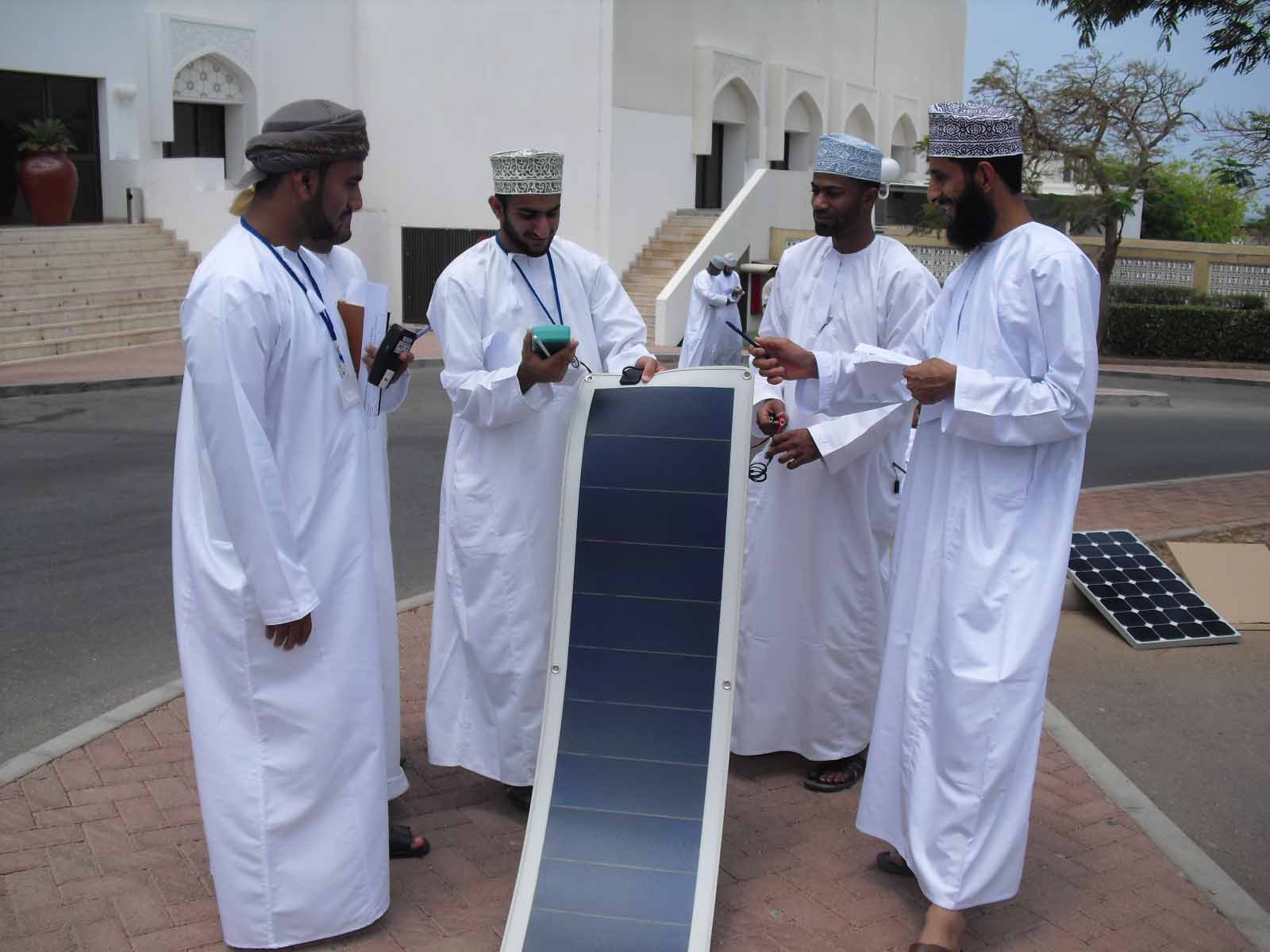
Service Catalogue
Find detailed information about the programme that best aligns with your needs and preferences.
Are you interested in a Customer-specific programmes?
Kindly fill out this questionnaire and attach it to the form on the right:
© 2024 | Renewables Academy (RENAC) AG
